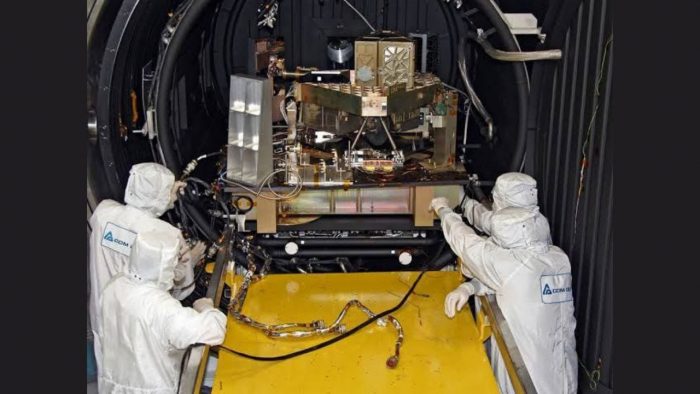The James Webb Space Telescope (JWST) is a space telescope designed primarily to conduct infrared astronomy. The world’s most powerful telescope ever, was launched on December 25, 2021. It is deployed in a solar orbit near the Sun–Earth L2 Lagrange point, about 1.5 million kilometres (930,000 mi) from the Earth.
JWST is equipped with four scientific instruments sensitive over a wide range of wavelength from the optical to the mid-infrared region i.e. (0.6 – 28.3 microns).
Webb’s unprecedented scientific power is a function of both the size of its primary mirror and the extreme sensitivity and precision of its four scientific instruments:
Each of these instruments will be described in great details one by one in different articles.
This article is dedicated to elaborating Webb’s Fine Guidance Sensor or in other words Near Infrared Imager and Slitless Spectrograph ( FGS/NIRISS), the function of each of its components, different modes, and the types of observations they are designed for.
JWST’s Fine Guidance Sensor /
Near Infrared Imager And Slitless Spectrograph (FGS/NIRISS).
Webb telescope can point accurately with the Fine Guidance Sensor (FGS) to capture high-quality photographs. The FGS/Near NIRISS’s Infrared Imager and Slitless Spectrograph will be utilized to look into the following science goals: first light detection, exoplanet identification and characterization, and exoplanet transit spectroscopy.
FGS/NIRISS is a specialized instrument with three major modes, each of which targets a different wavelength range, and has a wavelength range of 0.8 to 5.0 microns. FGS acts as a “guide,” assisting in the alignment of the telescope.
FGS/NIRISS Technical Details
Its camera can capture two-dimensional images of regions of space. While its spectrographs divide light into a spectrum and measure the brightness of each particular wavelength.
The aperture mask on Webb’s telescope is a metal plate with seven hexagonal holes that is put in front of the detectors to boost the telescope’s effective resolution and capture more detailed photos of extremely bright objects.
The Wavelength Range of NIRISS can catch light with wavelengths ranging from 0.6 microns (visible red) to 5 microns (mid-infrared).
The field of view of an instrument is the quantity of sky it can see at any given time. NIRISS has a field of vision of approximately 2.2 arcminutes.
